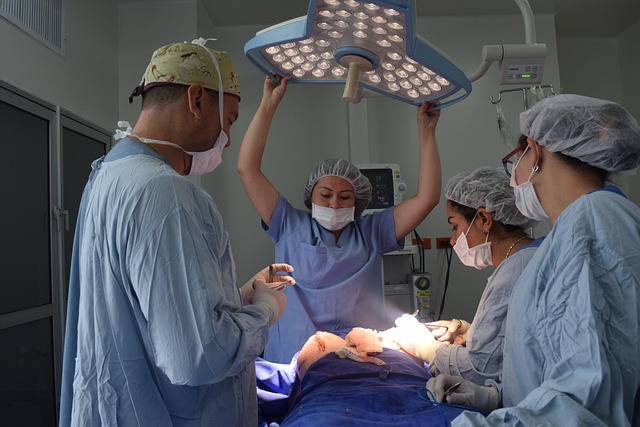Tummy Tuck Essentials: What to Expect from Abdominoplasty
Considering a tummy tuck or abdominoplasty? This in-depth guide walks you through how the surgery removes excess abdominal skin and fat, tightens weakened muscles, outlines who benefits, explains recovery timelines, highlights possible complications, and gives typical cost ranges to help you decide confidently.

Tummy Tuck Essentials: What to Expect from Abdominoplasty
Abdominoplasty, commonly called a tummy tuck, is an operation that reshapes the abdomen by removing surplus skin and fat and tightening weakened or separated muscles. When exercise and diet do not correct loose skin or a gap in the midline, abdominoplasty can restore a flatter, firmer profile and improve how clothing fits.
What the surgery addresses
A tummy tuck removes excess tissue from the lower and central abdomen and repairs stretched or separated abdominal muscles, such as diastasis recti. Surgeons may recommend a full abdominoplasty to treat the whole abdominal wall, or a mini tummy tuck that focuses on the lower belly. Liposuction is often used alongside abdominoplasty to smooth and refine the contours.
Who is an appropriate candidate?
Good candidates are typically healthy adults with localized sagging skin or weakened abdominal muscles that have not responded to lifestyle changes. Common scenarios include:
- Women with loose skin and separated muscles after pregnancy.
- People who have lost significant weight and are left with hanging abdominal skin.
- Individuals whose abdominal wall has weakened due to aging or genetic factors.
Abdominoplasty is not a weight-loss procedure. Ideal patients are at or near their target weight and committed to maintaining it. Surgeons usually advise postponing surgery if additional pregnancies are planned, as pregnancy can reverse surgical results. Smoking and uncontrolled medical conditions raise surgical risk and often require quitting smoking or medical optimization before proceeding.
Possible risks and complications
As with any major surgery, a tummy tuck has risks. Discuss these with a board-certified plastic surgeon to understand how they apply to your health profile:
- Infection, which may require antibiotics or additional procedures.
- Excessive bleeding or hematoma that could need treatment.
- Slowed wound healing or wound separation.
- Permanent scarring across the lower abdomen, typically positioned low enough to be hidden by underwear or swimwear.
- Temporary or, less commonly, lasting changes in skin sensation, including numbness.
- Seroma, a fluid collection that sometimes requires drainage.
- Blood clots, such as deep vein thrombosis (DVT), a serious postoperative risk.
- Anesthesia-related complications, especially in patients with other health issues.
Careful preoperative assessment, experienced surgical technique, and diligent adherence to postoperative instructions help reduce these risks.
Recovery expectations and a typical timeline
Recovery differs from person to person and depends on the extent of the procedure. The following timeline offers a general idea, but always follow your surgeon’s individualized plan:
- First week: Expect notable swelling, bruising, and discomfort. Most patients wear a compression garment and may have drains to evacuate fluid. Rest is essential; brief, gentle walks are encouraged to promote circulation. Pain medication is commonly prescribed.
- Weeks 2–3: Bruising and swelling usually begin to fade. Many people resume light activities and return to desk-based work, while avoiding heavy lifting and vigorous exercise.
- Weeks 4–6: Activity levels increase gradually. Patients whose jobs are not physically demanding often return to work. Scars begin to mature as swelling decreases further.
- After 6 weeks: Surgeons frequently clear patients for more intensive workouts and lifting. Final results continue to refine over several months as residual swelling resolves and tissues settle.
Follow-up appointments are important to check healing progress, remove drains or sutures, and address any concerns. Smoking cessation, careful wound care, adequate hydration, and balanced nutrition all support smoother recovery.
Expected outcomes and how long they last
A well-executed tummy tuck can deliver a noticeably flatter, firmer abdomen and improved body proportions. Many patients report increased confidence and comfort in clothing. Important points to consider:
- Results are longest-lasting when weight remains stable. Major weight changes or future pregnancies can alter outcomes.
- A permanent lower abdominal scar is part of the procedure; its visibility typically diminishes over time with proper care and scar-management strategies.
- Final contouring may take several months to appear as swelling subsides and scar tissue softens.
Typical costs and what may be included
Fees vary by location, surgeon experience, and procedure complexity. The estimates below provide a general picture but may not cover all fees.
| Region | Average Cost Range |
|---|---|
| United States | $6,000 - $12,000 |
| United Kingdom | £4,500 - £8,000 |
| Canada | CAD 8,000 - CAD 15,000 |
| Australia | AUD 8,000 - AUD 20,000 |
Prices listed are estimates and may not include anesthesia, facility fees, pre- and post-operative visits, medical tests, compression garments, or potential revision procedures. Figures are provided for general guidance only.
Choosing a surgeon and final considerations
Select a board-certified plastic surgeon with specific experience in abdominoplasty. During consultation, review before-and-after photos, ask about complication rates and revision policies, and discuss realistic expectations. A thorough consultation should include a medical history review, a physical exam, and a clear explanation of full versus mini tummy tuck options and whether combining liposuction is appropriate.
Plan for adequate recovery time and arrange for help at home during the initial days after surgery. Discuss pain control strategies, activity restrictions, scar-care measures, and the warning signs that require urgent medical attention. Also review costs, financing options, and any policies on revisions.
This article is for informational purposes only and should not be considered medical advice. Please consult a qualified healthcare professional for personalized guidance and treatment.





